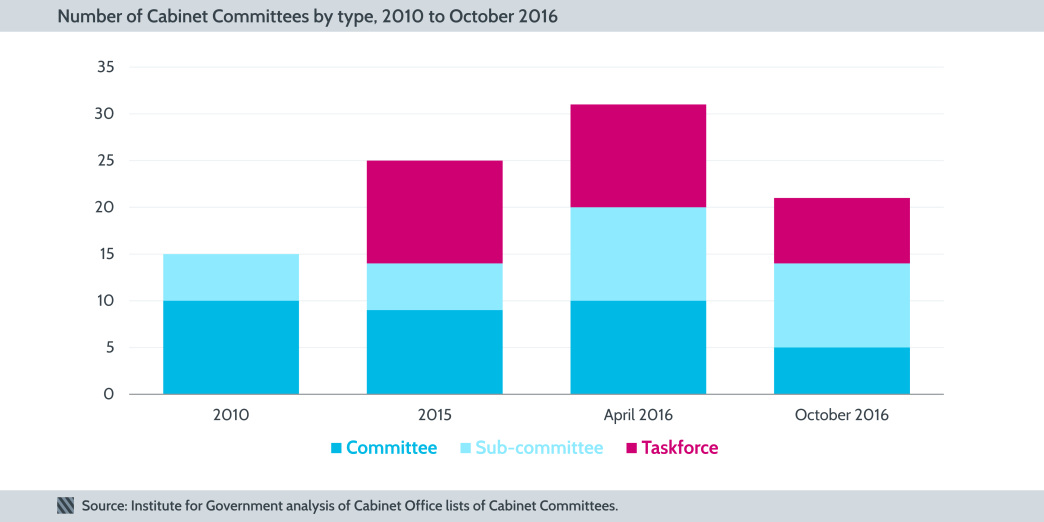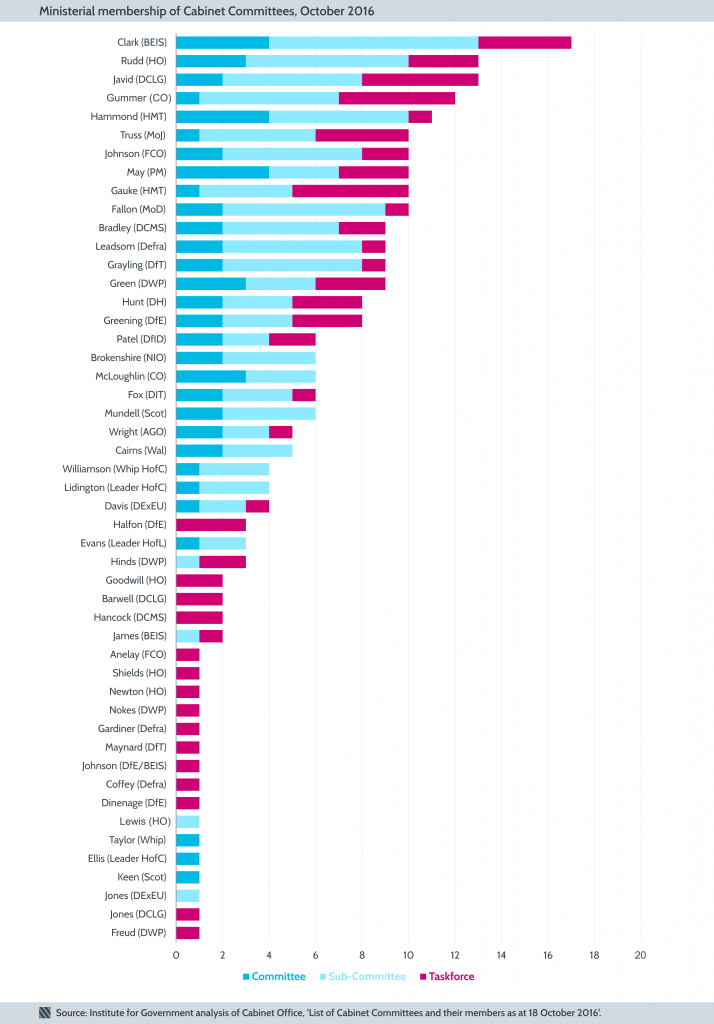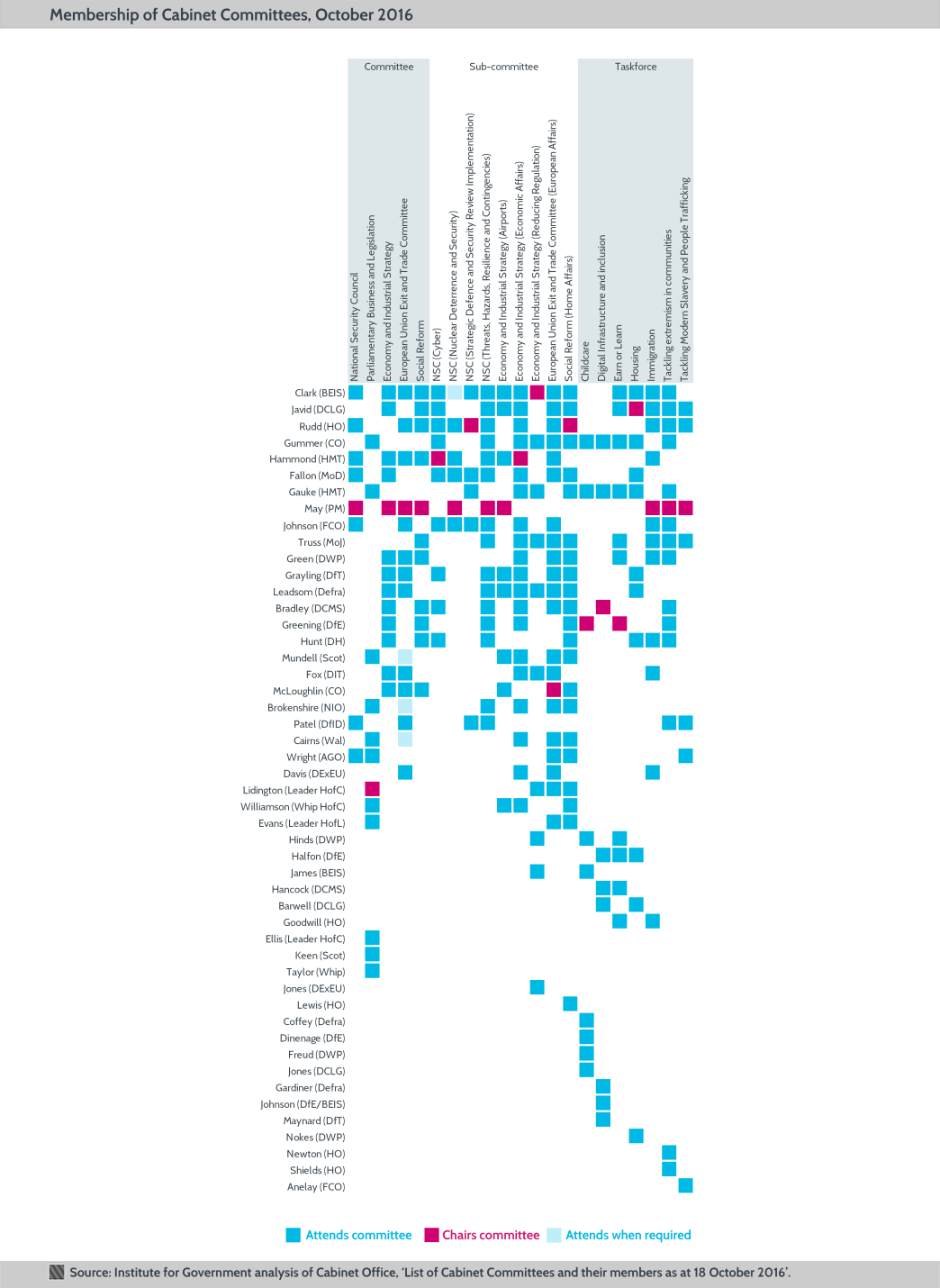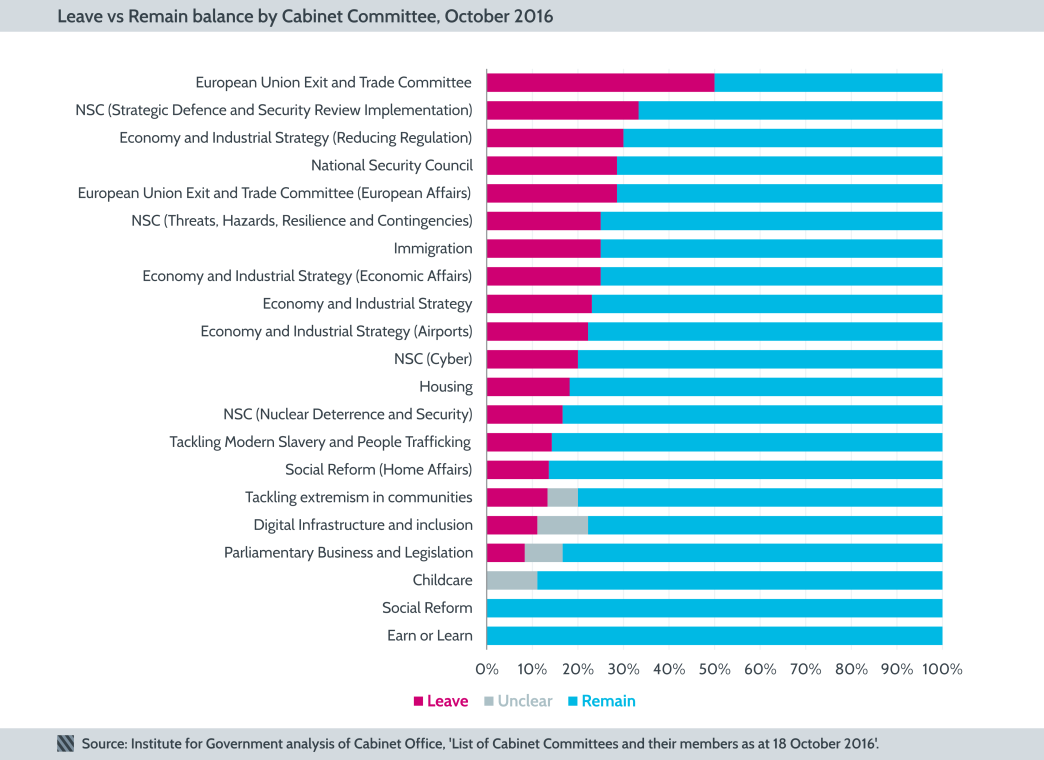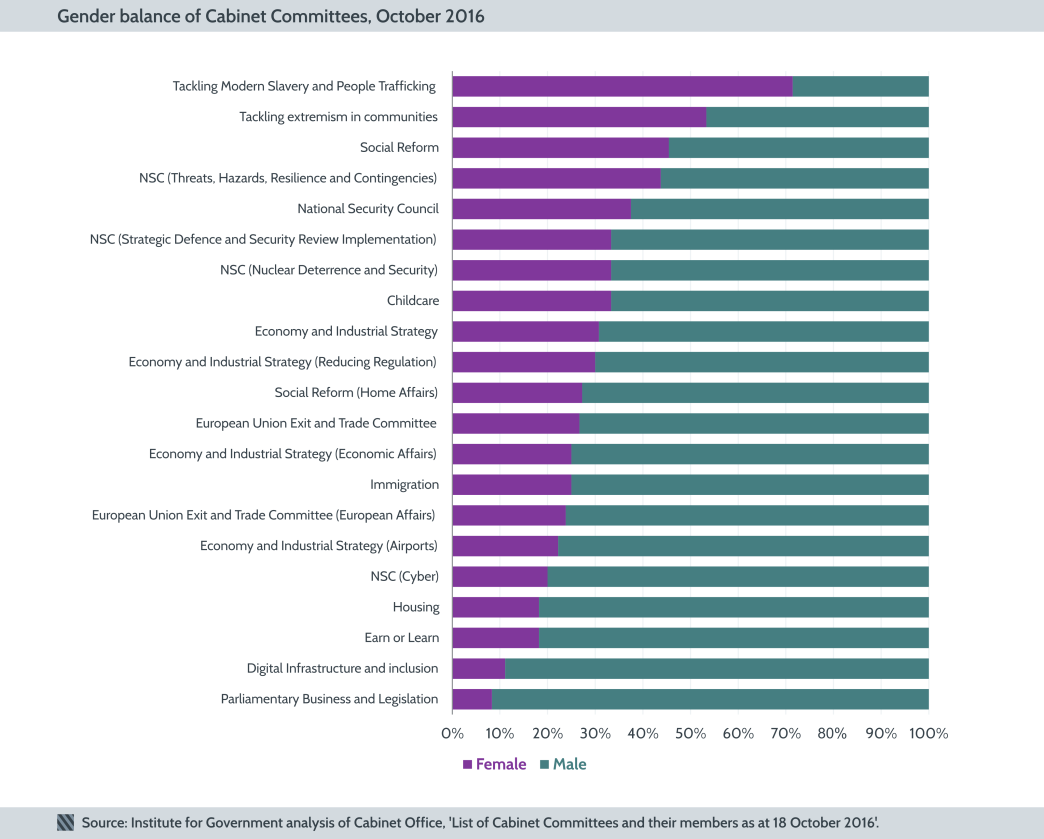Secret cabinet committees revealed: numbers and members under Theresa May
The Government has finally published the latest list of cabinet committees, where a lot of the real business of government is done
The Government has finally published the latest list of cabinet committees, where a lot of the real business of government is done. Adam Boon and Rob Adam find that there are fewer committees under May than Cameron, and that Business Secretary Greg Clark sits on more of them than anyone else. Click on the images to enlarge.
The number of cabinet committees has fallen from 31 under David Cameron to 21 under Theresa May.
The number of each type of body (committee, sub-committee and the implementation taskforces introduced by Cameron in 2015) has been reduced; full cabinet committees have halved from ten to five and are at the lowest level since 2010.
The subjects the committees deal with reflect the Prime Minister’s priorities: there is a new committee (and a new sub-committee) on ‘European Union Exit and Trade’, for example. Committees that don’t appear to have been reconstituted in some form are Troubled Families, Health and Social Care, and the National Security Council Sub-Committee on Syria and Iraq.
Business, Energy and Industrial Strategy Secretary Greg Clark can attend 17 committees, more than anyone else.
Clark – who is a member of 16 committees and attends one of the National Security Council sub-committees ‘as required’ – replaces Oliver Letwin, the Chancellor of the Duchy of Lancaster in the Cabinet Office under Cameron, as the minister attending the most cabinet committees. This roving brief could mean there is some substance behind the Prime Minister's commitment to an industrial strategy.
Of the Cabinet’s ‘three Brexiteers’, Foreign Secretary Boris Johnson is on the most committees (ten), followed by International Trade Secretary Liam Fox (six) and Brexit Secretary David Davis (four).
Theresa May chairs 10 out of 21 committees; David Cameron chaired 11 out of 31.
Although the new Prime Minister chairs one less committee than her predecessor, the fact there are fewer committees means she chairs a higher percentage – 48% compared to 35%. May chairs the new committees on Exiting the European Union, Social Reform, Tackling Modern Slavery and Economy and Industrial Strategy, again giving a sense of her priorities. Chairmanship of the other 11 committees is evenly spread, with Home Secretary Amber Rudd, Education Secretary Justine Greening and Chancellor Philip Hammond chairing two each.
Remainers dominate the committee places.
As the Government prepares for Brexit, only one committee – the Exiting the European Union and Trade Committee – is evenly balanced between those who supported Remain and those who supported Leave in the referendum. (Three additional ministers attend ‘when required’, and all are Remainers.)
As the committees discuss important issues relating to leaving the European Union, all but one will do so with a clear majority of those who voted to remain.
Men dominate the committee places.
Only two committees (Tackling Modern Slavery and People Trafficking and Tackling Extremism in Communities) have more than half female membership. This is despite the fact that the gender balance overall has improved since the last committee list, with the proportion of places going to women increasing from 22% to 30%. This mirrors the increasing percentage of women in the Cabinet.
The composition of cabinet committees gives us some sense of what decisions Theresa May is prioritising and which ministers are likely to be most influential in making them – but, as continued delays to the decision on a new Heathrow runway demonstrate, political decisions and political will rest ultimately with the Prime Minister.
See the full list of cabinet committees.
This post was amended on Tuesday 25 October as our mosaic chart of committee membership had presented some of the sub-committees in the wrong order.
- Topic
- Ministers
- Political party
- Conservative
- Position
- Prime minister Secretary of state
- Administration
- May government
- Publisher
- Institute for Government
